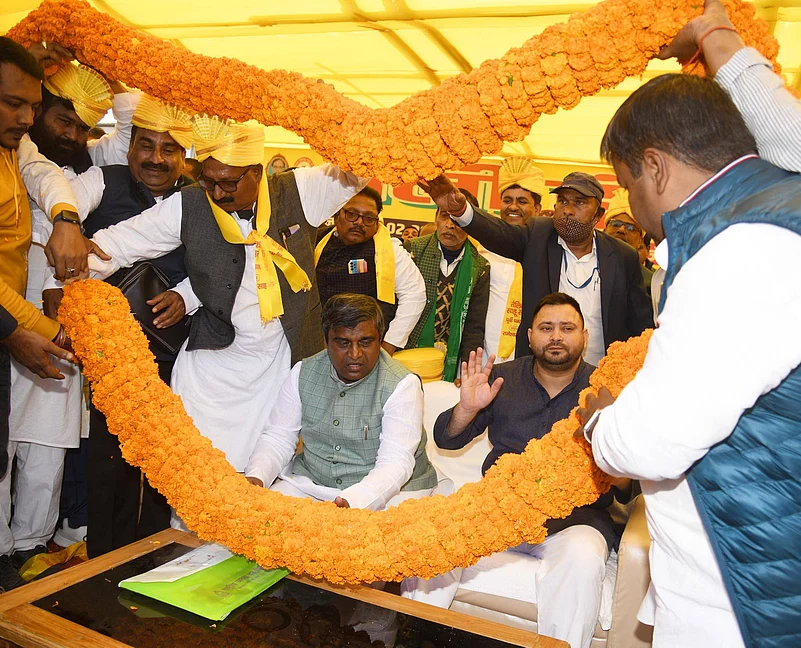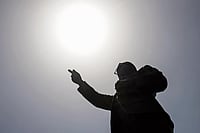
While caste has reinforced social hierarchies, it also provides Dalits and backward communities a platform to exercise political power
Upper-caste groups often use cultural capital to obscure caste, while backward and marginalised communities rely on caste identity as a strategic tool in electoral politics.
Understanding the role of caste associations reveals the enduring impact of caste on Indian democracy.
Caste in Indian society acts as a double-edged sword, shaping lives and opportunities in deeply unequal ways. Communities with land, wealth, and cultural capital use caste as a system of privilege and consolidation—it legitimises their social authority and ensures access to resources. For the majority, however, especially Dalits, nomads, and other marginalised groups, caste has historically meant exclusion from land ownership, education, and positions of power. Yet caste cannot be seen solely as a mechanism of oppression.
In a numbers-based democracy, it paradoxically gives marginalised groups some political leverage. The very identities that stigmatise them also create opportunities for solidarity and mobilisation. Dalits and other oppressed communities can organise as voting blocs, exercise their franchise, and demand welfare measures from the state.
The politicisation of caste has transformed it from a purely hierarchical system into a potential tool for negotiating access to democratic resources. Yet this political power is not evenly distributed. Members of privileged castes often have the freedom to “de-caste” themselves, presenting their identity in terms of class, profession, or individual merit. They can hide their caste when it suits them and display it when it helps. Marginalised groups, however, rarely have this choice. The stigma attached to certain castes remains widespread, affecting most disadvantaged Dalit communities and even some Extremely Backward Castes.
State assembly elections are soon to be held in Bihar, a state that exemplifies the close link between caste and democracy. Every party, whether in power or opposition, claims not to follow caste lines, while simultaneously shaping its electoral strategy around them. Indian elections, it seems, have become a ‘caste machine’. In Bihar, as elsewhere, Jayprakash Narayan once famously said, “Caste is the biggest political party”.
The influence of caste in politics is hardly new. Using caste identities for political mobilisation dates back at least to the colonial census, long before the democratic potential of caste was realised. Both in colonial and independent India, state and society reinforced caste while tying it to emerging democratic structures.
A decade ago, in 2015, a Teli-Sahu sammelan was organised by the Teli Samaj at Patna’s Sri Krishna Memorial Hall. As seen on the event poster, it aimed to highlight the caste identities of two prominent BJP leaders—Prime Minister Narendra Modi and then Jharkhand Chief Minister Raghubar Das—to consolidate support among the Teli community, a numerically strong jati within Bihar’s EBCs.
Although a political event, the stage was remarkably missing any BJP flag or party image, as the event was strictly organised under the aegis of the Teli-Sahu Samaj and not under any particular party banner. The message regarding which party to support was, however, quite unambiguous. It appears that the poster was against the abolition of caste and emphasised an increasing sense of caste identity. Yet, this would be an over-simplification of the problem.
In the National Archives of India, we found records from 1930 showing that certain communities repeatedly asserted their caste identities and requested the census commissioner to include them properly. One of these was the Kamlapuri Vaishyas, who insisted that they were distinct. There is ample evidence demonstrating how caste identities were forming internally and being reinforced by caste itself.
A cursory look into the history of elections and caste in Bihar and Uttar Pradesh reveals the use of caste organisations in North India. The emergence of caste associations in Bihar coincided with the introduction of electoral democracy under British colonial rule. With council elections in the 1920s, the role of caste associations in enlisting voters from their respective castes became increasingly important.
The idea of participation, and the fear of exclusion from the mainstream, led different castes to understand the power of numerical strength, which they sought to consolidate through their own caste associations. The Yadav Mahasangh in 1937 launched pamphlets appealing to voters to support Yadav candidates and send more Yadav legislators to the council by voting along caste lines. Similar appeals were made by other caste associations, and by the early decades of the twentieth century, these associations became an important platform for consolidating and amplifying electoral support for different caste groups.
In their book Bihar mein Samajik Parivartan ke Kuch Ayaam, authors Srikant and Prasanna Kumar Choudhary list almost 90 such rallies and sabhas organised by various caste associations in Bihar between 1911 and 1916. While many of these caste-based rallies were held in different parts of Patna district, other districts such as Darbhanga, Muzaffarpur, Purnea, Sasaram, Nalanda, Samastipur, Shahabad, Chhapra, Munger, and Bhagalpur also hosted several of these rallies, which emerged on Bihar’s political scene at the beginning of the twentieth century.
While caste associations like the Gop Sabha for Yadavs (formed in 1911) and the Ghamaila Kurmi Kshatriya Sabha (formed in 1914) mobilised intermediary castes, most caste associations in the early twentieth century catered primarily to the consolidation of upper castes, such as the Rajput Sabha, Kshatriya Sangathan, Mithila Mahasabha for Maithil Brahmins, and Bhumihar Brahmin Sabha. Most of these associations were formed to promote caste reforms, create awareness, and consolidate caste identity in order to negotiate effectively with census authorities.
The Triveni Sangh, formed in 1933, brought together different backward castes—Yadav, Kurmi, and Koeri—on a single platform, marking an important attempt to consolidate caste unity among groups similarly ranked in the British census. It was strategically significant, allowing these castes to form alliances and increase their numerical strength in democratic negotiations.
After independence, under Congress rule, the influence of caste associations waned as Bihar politics became dominated by upper-caste interests. While promising “development,” political power remained concentrated in a few castes. Jayprakash Narayan famously described the first Bihar cabinet under Sri Krishna Singh (Sri Babu) as a “Bhumihar Raj”, highlighting upper-caste dominance in the state.
Backward castes began asserting themselves politically to challenge this dominance. Caste-based mobilisation continued, often through socialist and Left parties such as the CPI-ML. Following the Mandal Commission report, caste associations were widely used to reinforce identity for political purposes—not only by backward castes but also by upper-caste groups seeking to retain or expand their power. Upper-caste communities can often mask their caste through cultural capital, a luxury denied to Dalits and other backward groups, who instead use their caste as a tool to access the benefits of electoral democracy




























